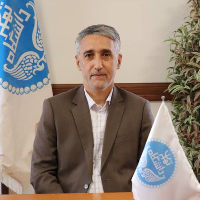The ups and downs of the theaters of Laleh-zar street (1941-1979)
From the Nasserite period to the mid-1930s, LalehZar Street was one of the main centers of modernism in Tehran. A significant number of theaters and cinemas, as well as cafes and offices of some of the press, were located in this street. The impotant matter is that our knowledge about many of these cases is limited and inaccurate. As an example, we can point to the serious weakness of the researches about LalehZar theaters. In an unpublished paper, we have explained the situation of LalehZar theaters from the time of the first performance in the upper floor of Faros Printing house in 1909 until the end of the reign of Reza Shah (1941). In this research, we seek to explain the situation of LalehZar theaters from 1941 to 1979. The main question of this research is about factors which were effective in the ups and downs of LalehZar theaters in the period between 1941 and 1979. We have used the library research method for collecting information about Laleh-zar theaters. Our findings indicate that political, cultural and economic factors were influential in the situation of LalehZar theaters in this period. Following the expansion of social and political freedom after the fall of the government of Reza Shah, the desire to perform theater increased and various theater groups began to work. In this relatively free space, critical views on social or political issues were presented in the songs performed in the interlude. Theater Performances of Nushin group in Farhang and Ferdowsi theaters increased the quality level of other theaters. After the coup 1953 a number of theater artists were arrested because of affiliation with Tudeh Party or National Front. However, political change did not make serious influence on LalehZar theaters. Of course, increasing the popularity of Cinema in the 1950s caused the LalehZar theaters to face economic problems. So they started performing attraction in the theater from 1956. Meanwhile, as a result of the geographical development of Tehran, from the mid-1930s, wealthy people and middle-class members gradually turned to other entertainment centers instead of LalehZar theaters, and the lower classes became the main clients of these theaters. Finally, during the Islamic Revolution, there were serious changes in the situation of LalehZar theaters.
-
The Social Constructivism Paradigm, the Hermeneutic-Dialectic Methodology, and the Fourth-Generation Evaluation: Prospects for Application in Tourism
Amirhossein Imanizadeh, Mohammadreza Rezvani *
Journal of tourism and development, -
Spatial Distribution Analysis Of Fig Product Value Chain(Study Case: Rural Areas Of Kohmareh District, Kohchenar City, Fars Province)
Mohammadreza Rezvani *, Alireza Darban Astane, Hossein Hosseinpour
Journal of Economic geography research, -
Feasibility study of sports spaces capability in urban tourism development (Case study: municipality districts 3 and 22 of Tehran)
, Khabat Derafshi *, Ma.Kourosh Fathalizadeh
Tourism Research and Sustainable Development Journal, -
Analysis of Knowledge Map of Livelihood Resilience of Rural Tourism Destinations Using VOSviewer
Touran Arab Mokhtari, Pegah Moridsadat *, Morteza Tavakoli,
Journal of Rural Research,




